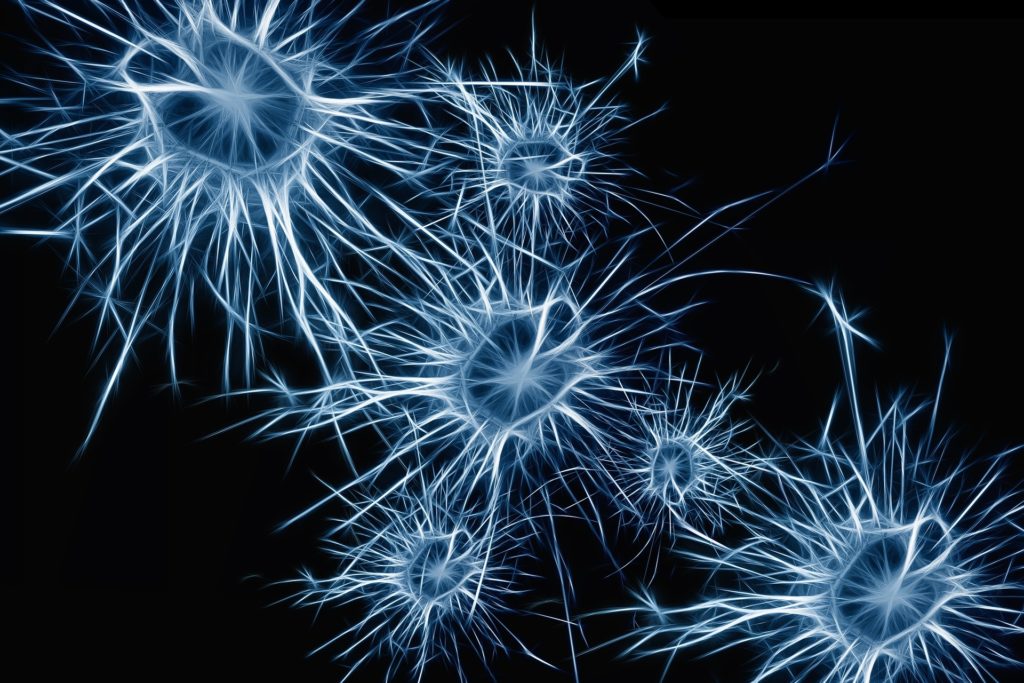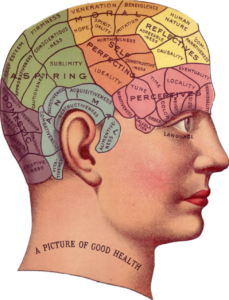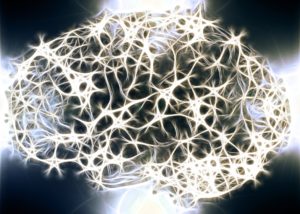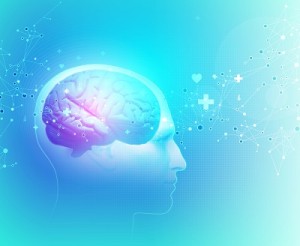- Calls to this hotline are currently being directed to Within Health or Eating Disorder Solutions
- Representatives are standing by 24/7 to help answer your questions
- All calls are confidential and HIPAA compliant
- There is no obligation or cost to call
- Eating Disorder Hope does not receive any commissions or fees dependent upon which provider you select
- Additional treatment providers are located on our directory or samhsa.gov
2020 Breakthrough Research in Anorexia Nervosa: Drs. Cynthia Bulik and Walter Kaye

Anorexia Nervosa (AN) is a puzzle for many reasons. What is it, and what can we do to treat it are commonly asked questions by students and health professionals alike? While we do not have a blood or other test to make a diagnosis, the combination of signs and symptoms are classic and are virtually identical to those seen centuries ago.
AN was the same in 1689 as it was in 1873 as it was in 1983 when Karen Carpenter died of this disease [1]. It is the same today. AN appears to be a biopsychosocial determined disease with important genetic and neurobiological roots.
Anorexia Nervosa occurred as part of religious fasting dating from the Hellenistic era. Mary, Queen of Scots, among others, appears to have suffered from AN. The English physician Richard Morton described AN in 1689, but the medical profession did not consider it seriously until the late 19th century.
In 1873, Queen Victoria’s physicians, Sir William Gull, published the classic, seminal paper which established the term anorexia nervosa. He described cases and treatments. In the same year, French physician Ernest-Charles Lasègue similarly published details of several cases in a paper entitled De l’Anorexie Hystérique.
In an addendum to his Anorexia Nervosa paper, Sir William Gull provides the following comment on Lasègue’s work: “It is understandable that Dr. Lasègue and I have the same sickness in mind, though the forms of our illustrations are different.
Dr. Lasègue does not refer to my address at Oxford, and it is most likely he knew nothing of it. There is, therefore, the more value in his paper, as our observations have been made independently. We have both chosen the same expression to characterize the malady.
In the address at Oxford, I used the term Apepsia hysterica, but before seeing Dr. Lasègue’s paper, it had equally occurred to me that Anorexia would be more correct ” [2]. Still, awareness of AN limited to MDs until the latter part of the 20th century, when German-American psychoanalyst Hilde Bruch published her famous work “The Golden Cage: the Enigma of Anorexia Nervosa” in 1978.
Anorexia Nervosa
The National Eating Disorders Association (NEDA) estimates that between 0.3 and 0.4 percent of all young women and 0.1 percent of young men suffer from AN on this or any day. They estimate that approximately 1 percent of women and 0.3 percent of men reported Anorexia during their lifetimes.
AN is a major cause of death among adolescents and young adults. Young people between the ages of 15 and 24 with AN are estimated to be at ten times greater risk of dying compared to same-aged peers. Although the disorder also affects males, the overwhelming predominance of women is undeniable.

Bulik has led many of the recent efforts. Bulik and her collaborators have a long history of reporting new data, which is really significant progress in AN genetic research. Most recently, with her collaborators, in Nature Genetics [3].
Quick Summary-Review of AN
Mitchell & Peterson’s 2020 review in the New England Journal of Medicine [4] reminds us that AN is often fatal. About 10% of those patients with Anorexia Nervosa will die of the disease. Medical complications, suicide, and co-occurring substance use disorders (SUD) are all too commonly reported.
Anorexia Nervosa
- Anorexia nervosa is a severe, sometimes fatal, psychiatric disorder characterized by starvation and malnutrition
- Weight preoccupation, overvaluation, and dissatisfaction are related to eating disorders, but no one body image construct can capture clinical risk in eating disorders.
- Preoccupation is the best-studied, most consistent concurrent and longitudinal predictor
- Coexisting psychiatric conditions often accompany Anorexia Nervosa
- AN is a disease that is usually progressive, difficult to treat with episodes where there is no response to treatment, frequent medical complications, and a substantial risk of death.
- Anorexia nervosa has two subtypes, but can progress from one sub-type to another: binge eating, purging, or both, and food restricting only
- AN patients are often hospitalized, which can be life-saving as they have severe starvation, dehydration hypotension, electrolyte abnormalities, arrhythmias or severe bradycardia, suicide risk. Just having a body-mass index (the weight in kilograms divided by the square of the height in meters) of 15 or less is a significant concern.
- Several psychotherapeutic approaches are commonly used in treatment by psychologists and psychiatrists
- Psychotropic medications are generally ineffective in promoting weight gain, reducing depressive symptoms, or preventing relapse in patients with anorexia nervosa.
- While current treatment is psychological and not personalized or informed by genes or improved by medications, about half of adolescents recover, and another 30% significantly improve
Scientific Progress: 2020
New insights will eventually lead to new treatments. Medications, psychedelic medicine, and deep brain stimulation may offer hope and help us to understand which diseases are the most like Anorexia Nervosa, major depression, OCD, or SUDs.
Scientific progress seen in the rest of psychiatry is finding its way to Anorexia Nervosa. The more researchers look into this disease, the more it appears to have important genetic and neurobiological causes. The circuitry of the brain’s reward system behaves differently in unaffected volunteers than in people with Anorexia and those who have recovered.
We have studied eating, eating sugar, and compared food and sugar rewards to those naturally occurring species survival reinforcement [5]. Hunger drives a search for food, eating, and makes food more rewarding. This is a well-known fact because starvation activates brain circuits that motivate eating.

One group of women had been diagnosed with AN, but were in remission (RAN); the other group did not have AN. The RAN group showed reduced neural activation to taste stimulation in the brain’s anterior insula and reduced connectivity between the right anterior and mid-dorsal insula and ventral caudal putamen.
This circuitry involves connected regions that are important for recognizing the feeling of hunger. This circuit typically would drive us to want to eat when we are starving or deprived of food. Most people report that hunger increases the reward and pleasure of food, and thus drives the motivation to eat.
Individuals with AN, however, tend to have a disconnect in this process. Anorexia Nervosa patients are obsessed with food, yet do not eat. Failure to launch this food reward circuit in people with AN may be a key to AN restrictive eating and severe weight loss in persons.
Anorexia Nervosa may be a disease where perceptions of hunger persist in a vacuum disconnected the motivation to eat. Patients with AN describe increased discomfort, anxiety, and panic when they eat, even when they are starving. Profound anxiety may contribute to starvation because it impairs the ability to start eating.
Bulik and others published in Nature Genetics the most extensive genetics study on the disease, analyzing the genomes of nearly 17,000 people with Anorexia and more than 55,000 people without. Eight risk loci for anorexia nervosa were identified that were predictive of other psychiatric disorders, a low BMI, and metabolic derangement.
This study showed that there was also a link to the ability to metabolize fats and sugars [7]. Who knows what this means other than the metabolic problems in AN could be produced by a biological predisposition.
Researchers identified other patterns of genetic associations similar to those found in other psychiatric illnesses, including OCD and depression. We had suspected that the brain’s reinforcement systems might reinforce disordered eating very early on and thought similarities to substance use disorders might offer a clue and endogenous opioid-dopamine targets.
There may be genetic and risk profile similarities between Anorexia and Bulimia Nervosa [8], which relate to genetics, reward deficiency, and early bad learning. Early starvation or dieting might be a trigger like teen cigarette smoking, early-onset binge drinking, or illicit drug use triggers.
Concluding Remarks

Psychedelic medicine [9] trials are also underway for mescaline, psilocybin, nitrous oxide, and others for depression and PTSD. Treatments for SUDs have changed dramatically over this time as well.
Reward deficiency syndrome [10] has been proposed to explain some of the patients with SUDs and brain circuits involved in naturally occurring pleasure and SUD related hijacking. Animal models for SUD have been quite good at predicting treatments, and many are currently in use. TMS [11], DBS [12], and even Vaccines based on these models may be the next for SUDs.
Many of these novel treatment approaches may be helpful in Anorexia Nervosa, Bulimia Nervosa, and other eating disorders.
References
1. https://www.npr.org/2013/02/04/171080334/remembering-karen-carpenter-30-years-later
2. https://en.wikipedia.org/wiki/History_of_anorexia_nervosa
3. Watson, H.J., Yilmaz, Z., Thornton, L.M. et al. Genome-wide association study identifies eight risk loci and implicates metabo-psychiatric origins for anorexia nervosa. Nat Genet 51, 1207–1214 (2019). https://doi.org/10.1038/s41588-019-0439-2
4. Mitchell JE, Peterson CB. Anorexia Nervosa.N Engl J Med. 2020 Apr 2;382(14):1343-1351. doi: 10.1056/NEJMcp1803175
5. Murray S, Tulloch A, Gold MS, Avena NM Hormonal and neural mechanisms of food reward, eating behaviour and obesity. Nat Rev Endocrinol. 2014 Sep;10(9):540-52. doi: 10.1038/nrendo.2014.91. Epub 2014 Jun 24.
6. Kaye WH, Wierenga CE, Bischoff-Grethe A, Berner LA, Ely AV, Bailer UF, Paulus MP, Fudge JL. Neural Insensitivity to the Effects of Hunger in Women Remitted From Anorexia Nervosa. Am J Psychiatry. 2020 Mar 12
7. Watson, H.J., Yilmaz, Z., Thornton, L.M. et al. Genome-wide association study identifies eight risk loci and implicates metabo-psychiatric origins for anorexia nervosa. Nat Genet 51, 1207–1214 (2019). https://doi.org/10.1038/s41588-019-0439-2
8. Yao, S., Larsson, H., Norring, C., Birgegård, A., Lichtenstein, P., DʼOnofrio, B., . . . Kuja-Halkola, R. (2019). Genetic and environmental contributions to diagnostic fluctuation in anorexia nervosa and bulimia nervosa. Psychological Medicine, 1-8. doi:10.1017/S0033291719002976
9. https://www.jns-journal.com/article/S0022-510X(20)30051-4/fulltext
Chi T, Gold JA. A review of emerging therapeutic potential of psychedelic drugs in the treatment of psychiatric illnesses. J Neurol Sci. 2020 Apr 15;411:116715. doi: 10.1016/j.jns.2020
10. Blum K, Baron D, McLaughlin T, Gold MS.Molecular neurological correlates of endorphinergic/dopaminergic mechanisms in reward circuitry linked to endorphinergic deficiency syndrome (EDS). J Neurol Sci. 2020 Apr 15;411:116733. doi: 10.1016/j.jns.2020.116733. Epub 2020 Feb 14
About the Author:

Dr. Gold was the first Faculty from the College of Medicine to be selected as a University-wide Distinguished Alumni Professor and served as the 17th University of Florida’s Distinguished Alumni Professor.
Learn more about Mark S. Gold, MD
The opinions and views of our guest contributors are shared to provide a broad perspective of eating disorders. These are not necessarily the views of Eating Disorder Hope, but an effort to offer a discussion of various issues by different concerned individuals.
We at Eating Disorder Hope understand that eating disorders result from a combination of environmental and genetic factors. If you or a loved one are suffering from an eating disorder, please know that there is hope for you, and seek immediate professional help.
Published on May 7, 2020.
Reviewed & Approved on May 7, 2020, by Jacquelyn Ekern MS, LPC
Published on EatingDisorderHope.com
